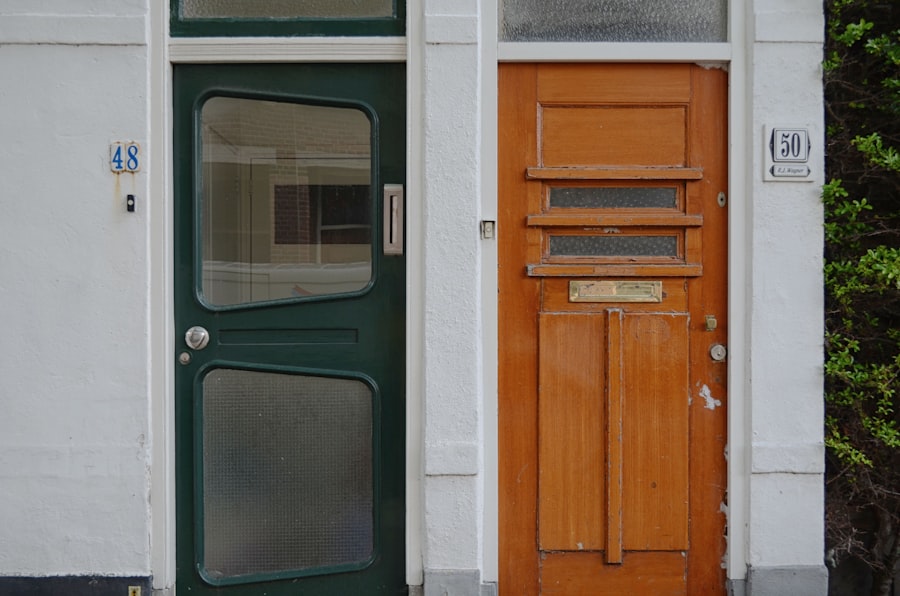The evolution of custom cabinets can be traced back to ancient civilizations, where the need for storage solutions was paramount. In ancient Egypt, for instance, furniture was crafted from wood and adorned with intricate carvings, serving both functional and decorative purposes. These early cabinets were often used to store valuable items, such as jewelry and ceremonial artifacts, reflecting the wealth and status of their owners.
Similarly, in ancient Greece and Rome, furniture makers began to experiment with different designs and materials, leading to the creation of more sophisticated storage solutions. The Greeks favored simplicity and elegance, while the Romans introduced elaborate designs that showcased their engineering prowess. As time progressed into the Middle Ages, the craftsmanship of cabinets evolved significantly.
The introduction of joinery techniques allowed for more durable and aesthetically pleasing constructions. During this period, cabinets became more than mere storage units; they transformed into symbols of wealth and artistry. The Renaissance period marked a significant turning point in cabinet design, as artisans began to incorporate ornate details, such as inlays and gilding, into their work.
This era saw the rise of bespoke furniture, where wealthy patrons commissioned unique pieces tailored to their tastes. The Industrial Revolution further revolutionized cabinet making by introducing mass production techniques, yet the desire for custom pieces remained strong among those who valued individuality and craftsmanship.
Key Takeaways
- Custom cabinets have evolved from ancient craftsmanship to modern design trends, blending tradition with innovation.
- Selecting the right wood type is crucial for durability, aesthetics, and functionality in custom cabinetry.
- Thoughtful design and quality craftsmanship ensure your cabinets are both unique and highly functional.
- Staying updated on contemporary styles and finishes can help personalize your cabinets to current trends.
- Proper budgeting and maintenance are essential for maximizing the value and longevity of custom wood cabinets.
Choosing the Right Wood for Your Custom Cabinets: A Guide to Different Types of Wood
Selecting the appropriate wood for custom cabinets is a critical decision that impacts both aesthetics and functionality. Different types of wood offer unique characteristics, making them suitable for various styles and uses. Hardwoods such as oak, maple, and cherry are popular choices due to their durability and rich grain patterns.
Oak, for instance, is known for its strength and resistance to wear, making it an excellent option for high-traffic areas. Its prominent grain adds a rustic charm that complements traditional designs. Maple, on the other hand, is favored for its smooth surface and light color, which can be stained or painted to achieve a desired look.
Softwoods like pine and cedar also have their place in custom cabinetry. Pine is often chosen for its affordability and ease of workability, making it a favorite among DIY enthusiasts. Its natural knots and variations lend a casual, rustic feel to spaces.
Cedar is particularly valued for its aromatic properties and natural resistance to decay, making it an ideal choice for cabinets in humid environments like bathrooms or laundry rooms. Additionally, exotic woods such as mahogany and teak are sought after for their luxurious appearance and unique grain patterns. Mahogany’s deep reddish-brown hue exudes elegance, while teak’s natural oils provide durability against moisture.
Designing Your Dream Cabinets: Tips and Tricks for Creating a Unique and Functional Space

Designing custom cabinets requires a thoughtful approach that balances aesthetics with functionality. One of the first steps in this process is to assess the specific needs of the space. Consideration should be given to the intended use of the cabinets—whether they will serve as kitchen storage, display units in a living room, or functional pieces in a home office.
Understanding how the space will be utilized allows for tailored designs that maximize efficiency. For instance, incorporating pull-out shelves or lazy Susans can enhance accessibility in kitchen cabinets, while adjustable shelving can accommodate varying display needs in living room units. Another essential aspect of cabinet design is the choice of style and finish.
The overall theme of the home should guide these decisions; whether it leans towards modern minimalism or classic elegance, the cabinets should harmonize with existing decor. Color selection plays a pivotal role in this process as well. Light colors can create an illusion of spaciousness in smaller areas, while darker hues can add depth and sophistication to larger rooms.
Additionally, hardware choices—such as knobs and handles—should complement the cabinet design while providing functionality. Mixing materials, such as glass doors with wooden frames or metal accents, can also add visual interest and uniqueness to custom cabinetry.
The Importance of Quality Craftsmanship: How to Find the Right Woodworker for Your Project
| Metric | Description | Importance Level | How to Evaluate |
|---|---|---|---|
| Experience (Years) | Number of years the woodworker has been practicing their craft | High | Review portfolio and ask for references |
| Project Completion Rate | Percentage of projects completed on time and within scope | High | Request client testimonials and project timelines |
| Quality of Materials Used | Type and grade of wood and other materials selected | Medium | Discuss material options and preferences with the woodworker |
| Attention to Detail | Precision in measurements, joints, and finishing | High | Inspect sample works or visit workshop |
| Customer Satisfaction Rate | Percentage of clients satisfied with the final product | High | Check online reviews and ask for client feedback |
| Communication Skills | Ability to understand and incorporate client needs | Medium | Evaluate responsiveness and clarity during initial consultations |
| Warranty or Guarantee Offered | Length and coverage of post-project support | Medium | Review contract terms and warranty policies |
| Price Transparency | Clarity and fairness of pricing structure | Medium | Request detailed quotes and compare with other woodworkers |
Quality craftsmanship is paramount when it comes to custom cabinetry; it directly influences both the longevity and aesthetic appeal of the finished product. Finding a skilled woodworker who understands your vision is crucial to achieving the desired outcome. Start by researching local artisans or woodworking shops with a solid reputation for producing high-quality work.
Online platforms and social media can provide insights into their portfolios, showcasing previous projects that reflect their style and capabilities. When evaluating potential woodworkers, consider scheduling consultations to discuss your project in detail. This interaction allows you to gauge their expertise and communication skills while providing an opportunity to share your ideas and preferences.
Ask about their experience with different types of wood and finishes, as well as their approach to design challenges. A good craftsman will not only listen to your needs but also offer valuable suggestions based on their knowledge of materials and construction techniques. Additionally, seeking references from past clients can provide further assurance of their reliability and craftsmanship.
Custom Cabinet Trends: Exploring Contemporary Styles and Finishes
The world of custom cabinetry is continually evolving, with contemporary trends reflecting changing tastes and lifestyles. One notable trend is the shift towards minimalist designs characterized by clean lines and uncluttered spaces. This style often incorporates flat-panel doors with integrated handles or push-to-open mechanisms that eliminate the need for visible hardware.
Such designs create a sleek appearance that resonates with modern aesthetics while maximizing functionality. Another emerging trend is the use of mixed materials in cabinet construction. Combining wood with metal or glass elements can create striking contrasts that enhance visual appeal.
For instance, wooden cabinets paired with metal frames or accents can evoke an industrial vibe while maintaining warmth through natural materials. Additionally, bold color choices are gaining popularity; deep blues, greens, or even black cabinetry can serve as statement pieces within a room. Textured finishes such as matte or satin are also becoming favored over high-gloss surfaces, offering a more subdued elegance that aligns with contemporary design sensibilities.
Maximizing Storage and Functionality: Innovative Features for Custom Cabinets

In today’s fast-paced world, maximizing storage and functionality within custom cabinets has become increasingly important. Innovative features can transform standard cabinetry into highly efficient storage solutions tailored to individual needs. One popular option is incorporating pull-out drawers or shelves that allow easy access to items stored at the back of deep cabinets.
This design not only enhances visibility but also minimizes the hassle of reaching into dark corners. Another innovative feature gaining traction is the inclusion of built-in organizers within cabinets. These organizers can range from spice racks in kitchen cabinets to adjustable dividers in drawers designed for utensils or office supplies.
Such thoughtful additions help maintain orderliness while ensuring that every item has its designated place. Additionally, integrating lighting within cabinets can enhance both functionality and ambiance; LED strips or puck lights illuminate interior spaces, making it easier to locate items while adding a touch of sophistication.
Budgeting for Custom Cabinets: Understanding the Costs and Value of Bespoke Woodwork
Budgeting for custom cabinets requires careful consideration of various factors that influence costs. The choice of materials plays a significant role; hardwoods typically command higher prices than softwoods due to their durability and aesthetic appeal. Additionally, intricate designs or custom features will increase labor costs as skilled craftsmanship is required to execute these details effectively.
It’s essential to view custom cabinetry as an investment rather than merely an expense. High-quality cabinets not only enhance the beauty of a space but also add value to a home over time. When budgeting, consider long-term benefits such as durability and reduced maintenance costs associated with well-crafted cabinetry.
It may be worthwhile to allocate funds towards premium materials or skilled artisans who can deliver exceptional results that stand the test of time.
Maintaining and Caring for Your Custom Cabinets: Tips for Long-lasting Beauty and Function
Proper maintenance is crucial for preserving the beauty and functionality of custom cabinets over time. Regular cleaning should be part of your routine; using a soft cloth dampened with mild soap and water can effectively remove dust and grime without damaging finishes. Avoid harsh chemicals or abrasive cleaners that could scratch surfaces or strip protective coatings.
In addition to cleaning, periodic inspections are essential to identify any signs of wear or damage early on. Check hinges, drawer slides, and other hardware for signs of loosening or corrosion; addressing these issues promptly can prevent more significant problems down the line. For wooden cabinets, applying a suitable wood conditioner or polish every few months can help maintain luster while protecting against moisture damage.
By following these care tips, homeowners can ensure their custom cabinets remain functional and visually appealing for years to come.



